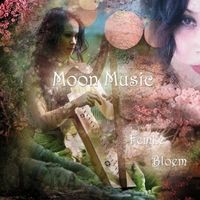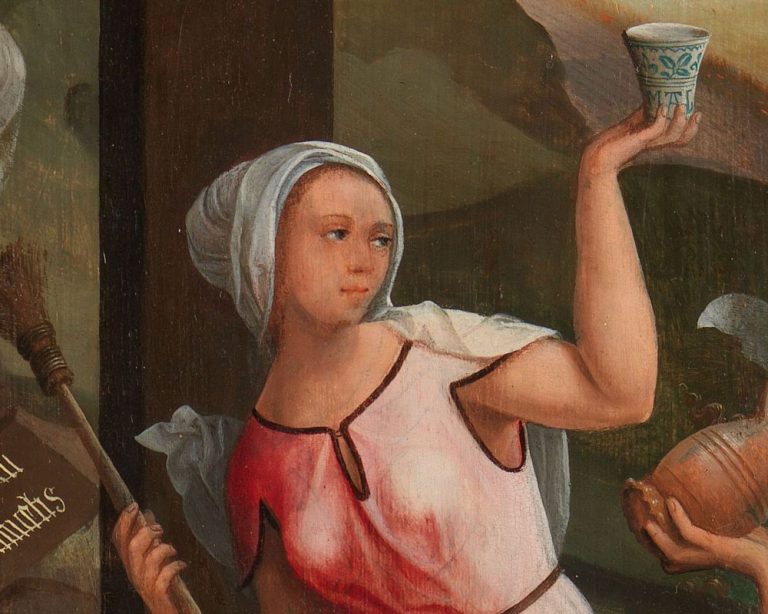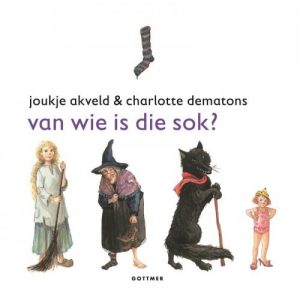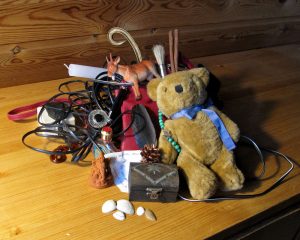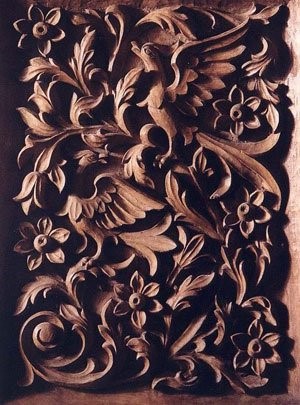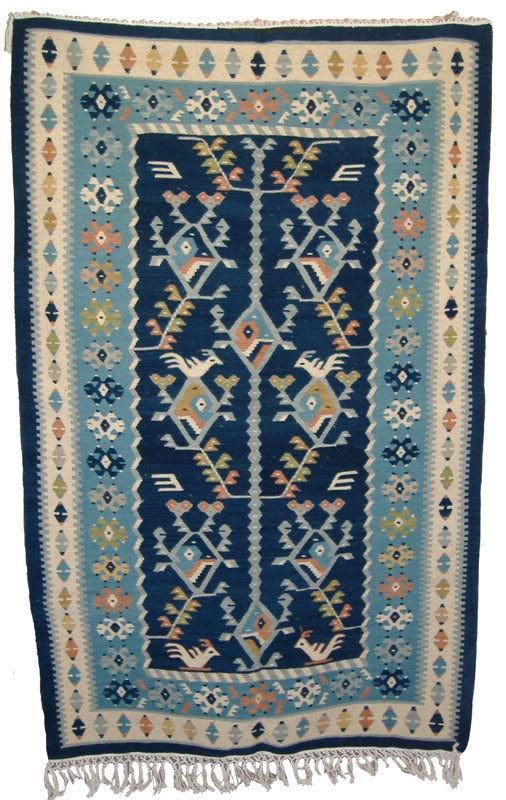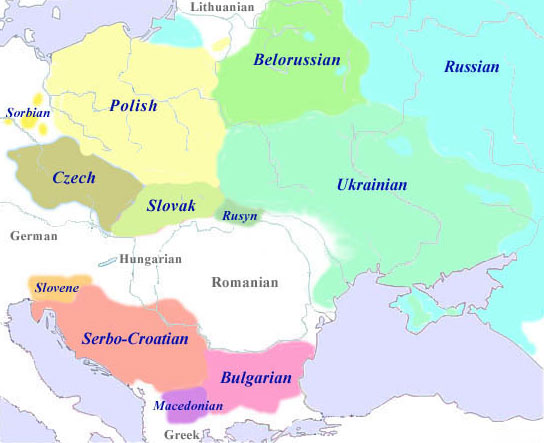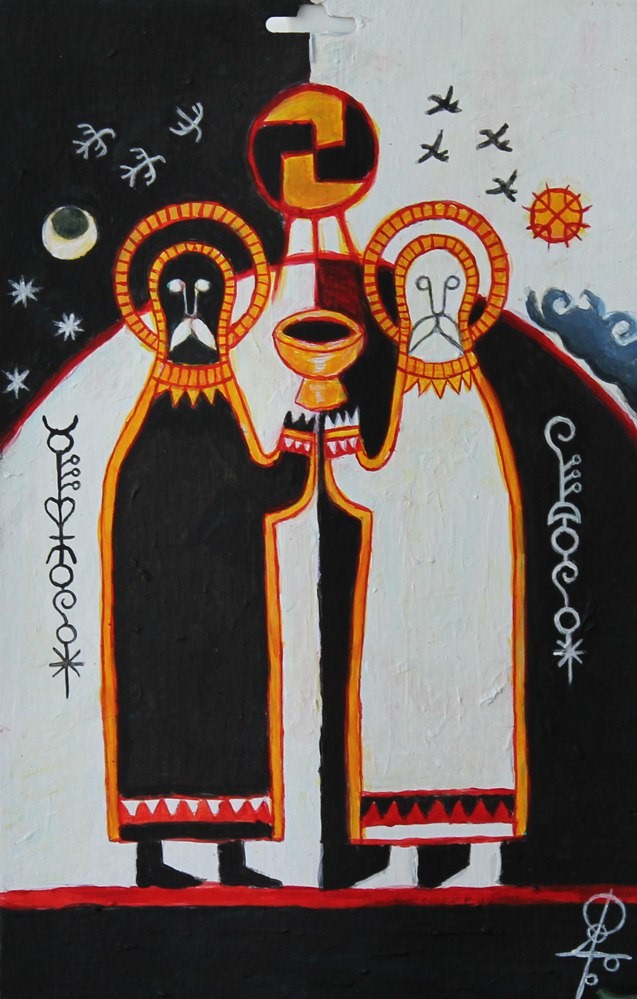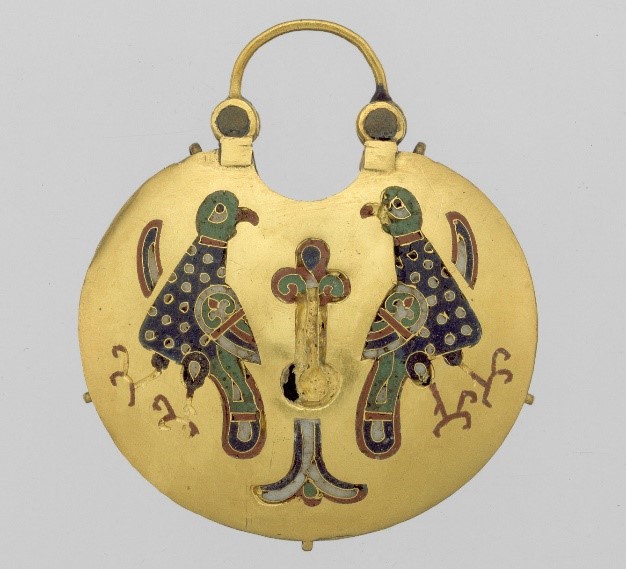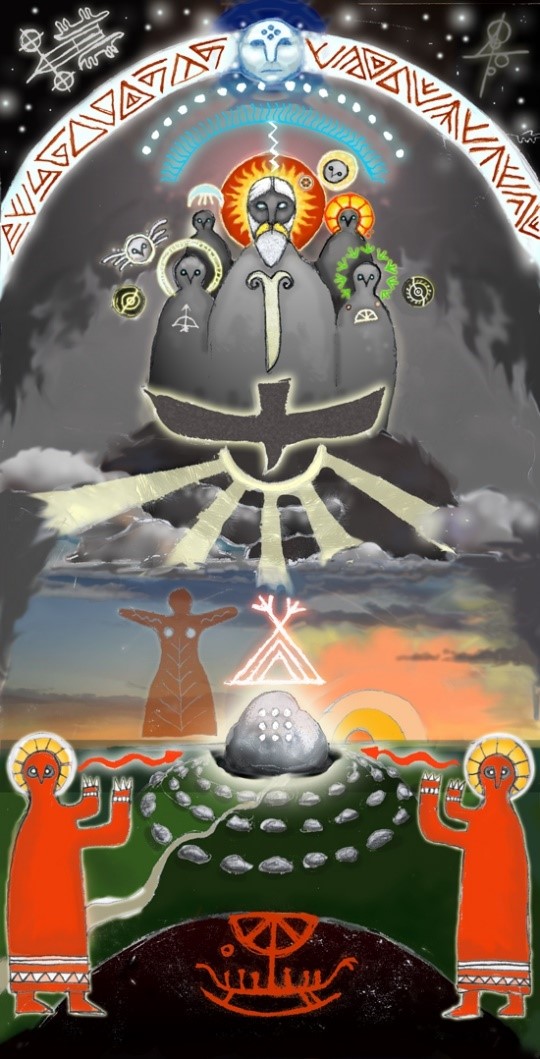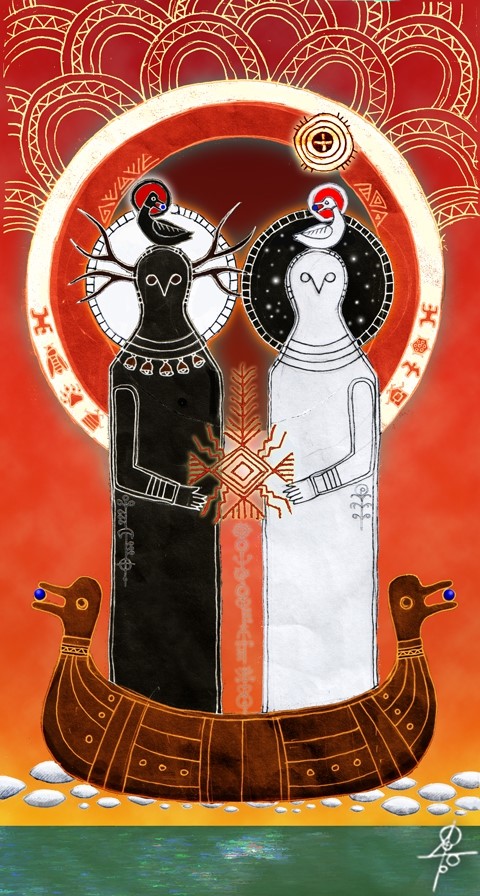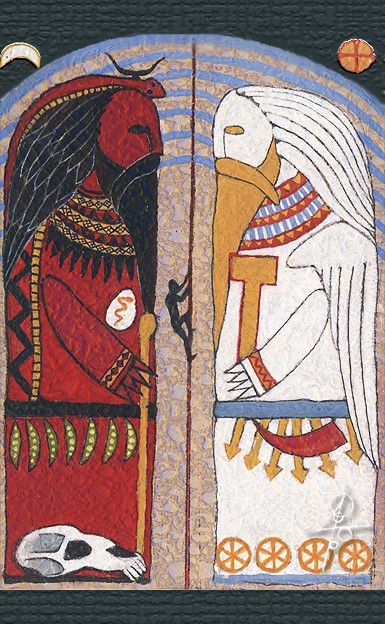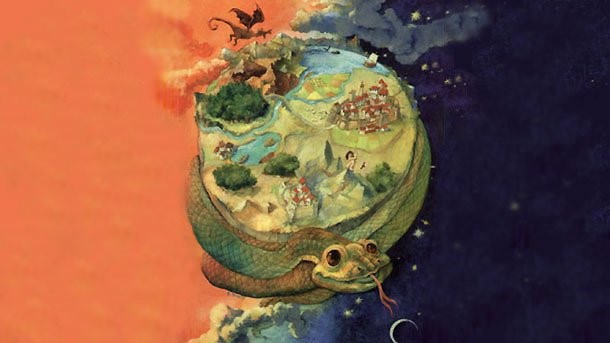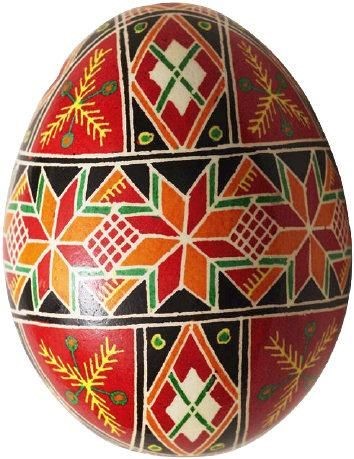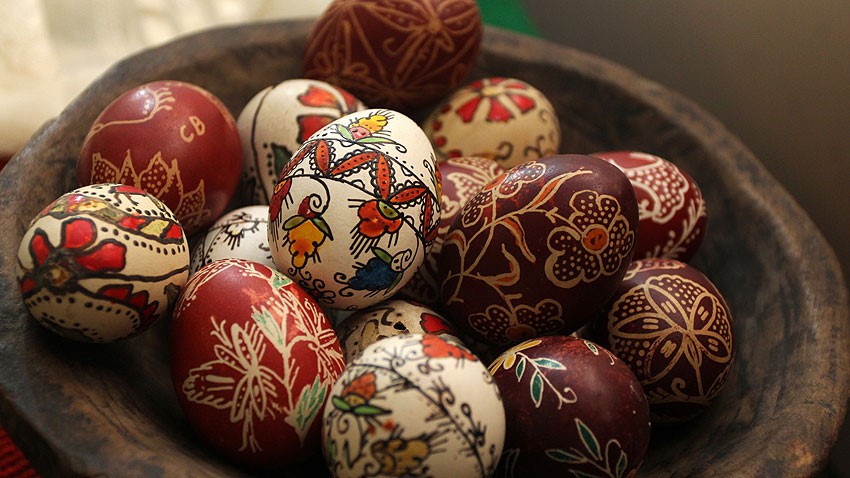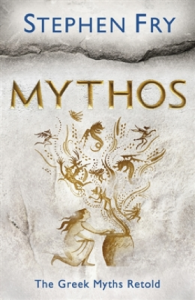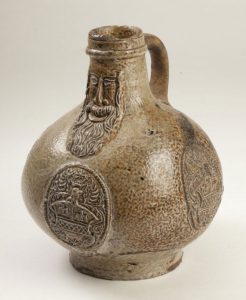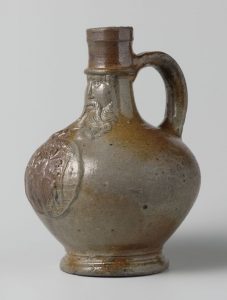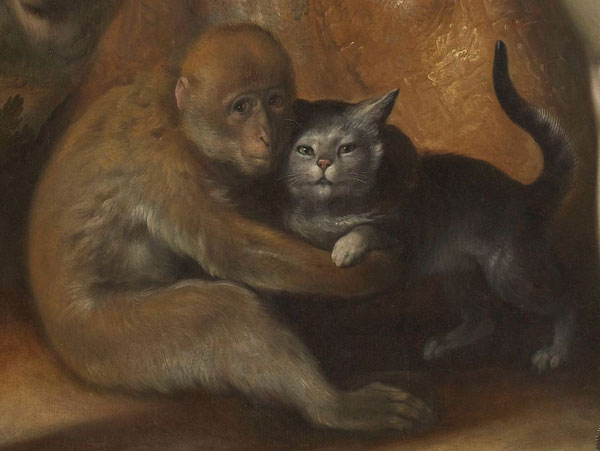In dit overzicht kun je vinden welke boeken – en enkele tarotdecks en wat speelgoed – we in eerdere edities besproken hebben in Wiccan Rede Online. Uiteraard kun je ook via het zoeksysteem zoeken naar een bepaalde titel, auteur of uitgeverij.
De E voor de titel betekent dat het boek in het Engels is geschreven (en de recensie vaak ook).
De N voor de titel betekent dat het boek in het Nederlands is (en de boekbespreking ook).
Find which books – and some tarot decks and toys – we have reviewed in previous editions of Wiccan Rede Online. Of course the search option can help find a particular title, author or publisher too.
An E in front of the title indicates a book (and most likely the review) in English.
An N in front of the title indicates a book (and review) in Dutch.
Besproken boeken – Wiccan Rede Online
Imbolc 2025
E: Tarot de Marsilio – Christophe Poncet, Scarlett Imprint
E: Witchcraft, a graphic history – Lindsay Squire and Lisa Salsi, Leaping Hare Press
N: Germaans heidendom – Frigga Asraaf, Het Rad
N: De tweede helft van je leven – Susan Smit, Lebowski
N: De Heilige Nachten – Mirjam van Donselaar, A3 boeken
E: A Year of Sacred Trees – Ariadne Rainbird, independently published
Samhain 2024
N: Het Verborgen Pad, magie als sleutel tot transformatie – Vivianne Crowley, A3 boeken
E: To All The Blessed Gods: An Anthology of the Living Orphic Tradition, with Prayers to the Theoi – Ariadne Rainbird, independently published
E: Maiden, Mother, Crone – Joanne Harris, Gollancz
Lammas 2024
N: De Roep van de Wilde Vrouw – Joyce Hellendoorn, independently published
N: Een betovering in de natuur – Alice Tarbuck, Orlando
N: Heidens! Volksgebruiken vandaag met sporen van voorchristelijke tradities – Marcel De Cleene, Sterck & De Vreese
E: A History of Witchcraft, Sorcerers, Heretics & Pagans – Jeffrey B. Russell & Brooks Alexander, Thames & Hudson
N: Verhalen uit het heksenhuisje – Hanna Karlzon, MUS
Beltane 2024
E: Staff of Laurel, Staff of Ash / Gaia – Dianna Rhyan and Irisanya Moon, Moon Books
E: ‘Letting Glow: A Guide to Intuition, Spirituality, and Living Consciously’ and ‘Glowing Deeper’ — Phill Webster, O-Books
E: In Our Right Minds: On the Sacred Feminine, the Right Brain and Restoring Humanity’s Natural Balance — Dale Allen, Dale Allen Productions
Imbolc 2024
E: Two esoteric tarots – Peter Mark Adams and Christophe Poncet, Scarlet Imprint
E: Magical and activist ancestors : exploring tangled roots – Luke Hauser, Reclaiming Quarterly.org
N: Heksenmonument – pamflet met bijdragen van o.a. Susan Smit, Lebowski
Samhain 2023
E: Rounding the Wheel of the Year – Lucya Starza, Moon Books
E: The Wheel of the Year – Rebecca Beattie, Elliott & Thompson
E: Chaos Monk – Steve Dee, The Universe Machine
E: Toil & Trouble – Lisa Kröger & Melanie R. Anderson, Quirk Books
N: Schaduwdieren – Dawn Baumann Brunke, A3 Boeken
Lammas 2023
E: Otherwise Than the Binary – J. E. Decker, D. A. Layne, M. Vilhauer, SUNY Press
E: The Art of Lithomancy: Divination with stones, crystals, and charms – Jessica Howard, Moon Books
E: Pagans. The visual culture of Pagan myths, legends + rituals – Ethan Doyle White, Thames & Hudson
E: The Green Witch – Arin Murphy-Hiscock, Adams Media
N: Ik ben omdat wij zijn – Marijn Louis Willems, Boekscout
Beltane 2023
E: Magic for Hedge Witches – Sourcing Ingredients, Connection, Spell Building – Harmonia Saille, Moon Books
N: Heks! Heks! Heks! – Jente Posthuma, Pluim
Imbolc 2023
N: Plantaardig – Th.C.W. Oudemans, KNNV Uitgeverij
E: The Golden Bubble – Jean M Williams, Lulu
E: The Liminal Odyssey – Sande Hart. Independently published
Samhain 2022
N: Offerkind – Rob Ruggenberg, Querido
N: De heilige natuur – Karen Armstrong, Querido
N: Jaarwerkboek – In het licht van de maan – Petra Stam, A3 Boeken
N: Op reis met de Tarot – Corrie van Hese Balten, A3 Boeken
N: Senang met de stille kracht – Ivonne Kreule, Stichting Aliran
Lammas 2022
E: Baba Yaga’s Book of Witchcraft – Madame Pamita, Llewellyn
E: Here Be Magick: the people and practices of the Coven of Atho – Melissa Seims. Independently published
E: Queens of the Wild: Pagan Goddesses in Christian Europe – Ronald Hutton. Yale University Press
E: The Temple Priestesses of Antiquity – Lady Haight-Ashton, Moon Books
Beltane 2022
N: Ruimte scheppen voor een nieuw begin – Christine de Vries, A3 Boeken
N: Kleurenpracht en kruidenkracht – Marijke Eering en Marjanne Huising, A3 Boeken
N: Wind – Maja Kooistra, A3 Boeken
N: Spiegel van de Zodiak – 50 Divinatiekaarten van Anneliese Melens, A3 Boeken
N: De wijsheid van de heks – Susan Smit, Lebowski
E: Wild Once – Vivianne Crowley, Century
E: The Witch’s Path – Thorn Mooney, Llewellyn
E: The world of Stonehenge – Duncan Garrow and Neil Wilkin, The British Museum Press
Imbolc 2022
D: Hexensabbat – Entzifferung einer nächtlichen Geschichte – Carlo Ginzburg, Wagenbach
E: Lights, Camera, Witchcraft: A Critical History of Witches in American Film and Television – Heather Greene, Llewellyn
E: The Power of the Healing Field: Energy Medicine, Psi Abilities, and Ancestral Healing – Peter Mark Adams, Healing Arts Press
E: Contemporary Witchcraft: Foundational Practices for a Magical Life – Frances Billinghurst, Moon Books
E: The Last Witches of England: A Tragedy of Sorcery and Superstition – John Callow, Treadwell’s
N: Tarotdeck Mythische Godinnen – Sage Holloway and Katherine Skaggs, A3-boeken
N: De Kracht van Symbolen – Abe J.van der Veen
N: Vuur, handboek voor Hoeders – Immia Schellevis, A3-boeken
Samhain 2021
E: So Potent Art – Emily Carding, Llewellyn
N: Ariadne – Jennifer Saint, Wildfire (English) / Orlando (Nederlands)
N: De heks van Limbricht – Susan Smit, Lebowski
N: Heksen. Eerherstel voor de vrouwelijke rebel – Mona Chollet, De Geus
N: Heks in het groen – Lunadea, Ankh-Hermes
Lughnasadh 2021
N: Nieuw licht op Nehalennia – Annine E.G. van der Meer, Pansophia
E: Aspecting the Goddess – Jane Meredith, Moon Books
N: De ‘Sleedoorn’-boeken – Kevin Sands, Gottmer
N: HEX – Thomas Olde Heuvelt, Luitingh-Sijthoff
N: Nehalennia: Godin van de zeekust – GardenStone
N: Religie herzien – Jonas Slaats, Davidsfonds
Beltane 2021
E: God Is Dead, Long Live the Gods: A Case for Polytheism – Gus DiZerega, Llewellyn
E: In search of the New Forest Coven – Philip Heselton, Fenix Flames
N: Jaguarman – Raoul de Jong, De Bezige Bij
Imbolc 2021
E: A practical guide to Pagan priesthood – Lora O’Brien, Llewellyn
E: Wicca and the Christian Heritage. Ritual, Sex and Magic – Joanne Pearson, Routledge
E: The once and future witches – Alix E. Harrow, Orbit
E: Pagan and Witch Elders of the World: Past and Present – Tamara von Forslun, Xlibris
E: Hex Life. Wicked new tales of witchery – Ed. Chr. Golden and Rachel Autumn Deering, Titan Books
Samhain 2020
E: Pan’s Daughter. The Magical World of Rosaleen Norton (rev) – Nevill Drury, Mandrake of Oxford
Lughnasadh 2020
N: Heidense heiligdommen. Zichtbare sporen van een verloren verleden – Judith Schuyf, Omniboek
E: The Way of the Odin Brotherhood – Jack Wolf, Mandrake of Oxford
N: Indianen van Suriname – Petra Nelstein, LM Publishers
N: Witte wieven, weerwolven en waternekkers – Abe J. van der Veen, mijnbestseller
E: Hoodoo. Folk Magic (Pagan Portals) – Rachel Patterson, Moon Books
N: Hazels Spreuk (Heksenspiegel, 2) – Marte Jongbloed, Luitingh-Sijthoff
Beltane 2020
E: Hine’s Varieties. Chaos & Beyond – Phil Hine. Original Falcon
N: De Horens van de Maan – boek van Merlin Sythove. Silver Circle Publishing
N: De weg van de heks – Lunadea. Ankh-Hermes
E: Physical Evidence for Ritual Acts, Sorcery and Witchcraft in Christian Britain. &
E: Cultures of Witchcraft in Europe from the Middle Ages to the Present. Palgrave Macmillan
Imbolc 2020
E: Magic and Witchery in the Modern West. Palgrave Macmillan
E: The Triumph of the Moon (revised edition) – Ronald Hutton. Oxford University Press
E: Mystai – dancing out the mysteries of Dionysos – Peter Mark Adams. Scarlet Imprint
Samhain 2019
N: Circe – Madeline Miller. Bloomsbury Publishing
Lughnasadh 2019
E: New Wings for Daedalus. Wilhelm Reich – Israel Regardie. Original Falcon
E: The Pagan Heart of the West – volume I & II – Randy P. Conner. Mandrake of Oxford
E: Circle for Hekate, Vol 1: History & Mythology – book by Sorita d’Este. Avalonia
Beltane 2019
E: Sekhmet and Bastet – Lesley Jackson. Avalonia Books
N: Het begin (boek 1 van De bron) – Nora Roberts. Boekerij
Imbolc 2019
E: Pagan Britain – Ronald Hutton. Yale University Press
N: Botanisch handboek medicinale planten – Monique Simmonds e.a. KNNV uitgeverij
N: Dodelijke planten – Elizabeth A. Dauncey & Sonny Larsson. KNNV uitgeverij
N: Runenmagie en sjamanisme – Jörgen I Eriksson. Norrshaman
E: Village Witch – Cassandra Latham-Jones. Mandrake of Oxford
Samhain 2018
E: Traditional Wicca, ‘A Seeker’s Guide’ – Thorn Mooney. Llewellyn
N: Hazels pentakel – Marte Jongbloed. Luitingh-Sijthoff
N: Duivelskruid – Marita de Sterck. Querido
N: Paradijs in de polder – Arita Baaijens. Atlas Contact
Lughnasadh 2018
E: Wudewasa – Matthew Cowan. Kehrer Verlag
E: Garbed in Green – Casey Giovinco.
E: The Silent Listener – Wilmar Taal. Troy Books
E: The Witch – Ronald Hutton. Yale University
Beltane 2018
N: Kennis in beeld – red. van Andrea van Leerdam. Verloren
N: Van wie is die sok – boek van Joukje Akveld & Charlotte Dematons. Gottmer
E: The Woman in the Shaman’s Body – Barbara Tedlock. Bantam
Imbolc 2018
E: Mythos. The Greek Myths Retold – retold by Stephen Fry. Penguin
N: ‘Zoektocht naar het paradijs’ – Arita Baaijens. Atlas Contact
& ‘De beer en de nachtegaal’ – Katherine Arden. Luitingh-Sijthoff
E: The Square and the Circle – Payam Nabarz. Avalonia
Samhain 2017
E: Witch. Unleashed. Untamed. Unapologetic – Lisa Lister. Hay House
E: Holy Books and Eco Spirituality – Abraham Karickham. Colombo Papers
N: Voudou. Van New Orleans naar Cotonou op het ritme van de goden – Leendert van der Valk. Atlas Contact
E: Isis: Goddess of Egypt & India – Chris Morgan. Mandrake of Oxford
E: The Seven Names of Lamaštu – Jan Fries. Avalonia
Lughnasadh 2017
E: Getting Higher – the Manual of Psychedelic Ceremony – Julian Vayne. Psychedelic Press
N Moongazers & Trailblazers – Léon van Gulik
E: Pagan Planet – Nimue Brown. Moon Books
E: Plant Spirit Gardener – Alanna Moore. Python Press
E: Pagan Dreaming – Nimue Brown. Moon Books
Beltane 2017
N: Het innerlijke leven van dieren – Peter Wohlleben. A.W. Bruna
N: Afdalingen – Marjoleine de Vos. Ambo/Anthos
N: Magische meisjes – Anne-Marie Boer. Leopold
& Hoe word je een heks? – Ina Vandewijer. Davidsfonds/Infodok
Imbolc 2017
N: Het hele jaar feesten – Lisa Wade en Daan Rot. Christofoor
E: A Beautiful Resistance – The Fire Is Here (magazine) – Gods and Radicals
N: Mythen moet je niet geloven! – Damon
N: Natuur werkt! – Judith Zadoks, Tini van de Wetering. Zadoks
Samhain 2016
E: The Gods Within – Jean Williams and Zachary Cox. Moondust Books
N: Nevelvrouw – Linda Wormhoudt. A3 boeken
E: Witchcraft Today – 60 Years On – Edited by Trevor Greenfield. Moon Books
Lughnasadh 2016
N: Het verborgen leven van bomen – Peter Wohlleben. A.W. Bruna
E: A Gnostic’s Progress – Steve Dee. The Universe Machin
E: The British Book of Spells and Charms – Graham King. Troy Books
N: Hathor: A Reintroduction to an Ancient Egyptian Goddess – Lesley Jackson. Avalonia
N: De heilige buxusmoeder – Marjanne Huising. A3 boeken
E: Heirs to Forgotten Kingdoms – Gerard Russell. Simon & Schuster
N: Boerenmagie – J.G. Bornebroek. Geunhuis Producties
E: All Souls Trilogy – A Discovery of Witches / Shadow of Night / The Book of Life – Deborah Harkness. Penguin
N: Allerzielentrilogie – Allerzielen / De schaduw van de nacht / Het boek des levens – Deborah Harkness. Boekerij
N: Paralipomena Orphica – Harry Mulisch. B for Books
E: Doors of Valhalla – Vincent Ongkowidjojo. Mandrake of Oxford
Beltane 2016
E: Chaos Craft – Julian Vayne & Steve Dee. The Blog of Baphomet
E: Lifting the Veil – Janet Farrar & Gavin Bone. Marion Street Press
N: Wat is hekserij? – Lunadea Ruthy Jankiewicz. Lunadea
Imbolc 2016
E: Wicca – History, Belief, and Community in Modern Pagan Witchcraft – Ethan Doyle White. Sussex Academic Press
N: Toverij en toveressen – Ruud Borman. Fantastisch Verleden
E: The Journey into Spirit – Kristoffer Hughes. Llewellyn
N: De wereld in evenwicht – Jacco Dieleman. Salomé
E: Wicca Magickal Beginnings – Sorita d’Este & David Rankine. Avalonia
N: Sigmund weet wel raad met spiritualiteit – Peter de Wit. De Drukkery
E: Doreen Valiente Witch – Philip Heselton. D.V. Foundation
Samhain 2015
E: The Play Goes On – by Zachary Cox, Jean M. Williams et al. Starfire
N: De heksen van Bruegel – Renilde Vervoort. Van de Wiele
E: The Witches’ Heart – Eileen Smith. Capall Bann
E: The Gospel of Loki – Joanne M. Harris. Gollancz
E: Llewellyn’s 2016 Witches’ Companion – ed. Andrea Neff. Llewellyn
Lughnasadh 2015
E: Celebrating Planet Earth – Edited by Denise Cush. Moon Books
E: Spirits of the Sacred Grove – Emma Restall Orr. Moon Books
N: Het Nederlands bakboek – Gaitri Pagrach-Chandra. Kosmos
N: Dichtbij ver van hier – Tonke Dragt. Leopold
N: De wijsheid van bomen en kruiden – Abe van der Veen. Mijn Bestseller
Beltane 2015
E: All Acts of Love and Pleasure – Yvonne Aburrow. Avalonia
N: Magia, de weg van de magiër – Ronald H.C. ter Haar. Boekscout
E: Walking the Old Ways – Edited by Adam Anczyk and Halina Grzymala-Moszczyńska. Sacrum
E: Reasonances – Carl Anbrahamsson. Scarlett Imprint
N: Mei – Aat van Gilst. Aspekt
N: ABC van Meditatie – Mark Teijgeler. Aerial
E: Rún, magic grimoire (& Galdrakver), Hólmavik
Imbolc 2015
E: Essays in Contemporary Paganism – ed. by Trevor Greenfield. Moon Books
E: Children of Cain – Michael Howard. Three Hands Press
E: Bull of Heaven – Michael Lloyd. Asphodel Press
N: Heidense Hekserij – Jack Stoop. Boekenbent
Samhain 2014
N: Zwarte Sinterklazen – Arnold-Jan Scheer. Papieren Tijger
E: Apocalyptic Witchcraft – Peter Grey. Scarlet Imprint
E: Ameth – The Life and Times of Doreen Valiente – Jonathan Tapsell. Avalonia
E: The Witches’ Herbal – Michael Howard. Red Thread Books
E: Witchcraft in Yorkshire – Patricia Crowther. Harvest Shadows
Es: Beyond the Broomstick – Morgana Sythove. Whyte Tracks
E: Witchcraft in Early Modern Poland 1500-1800 – Wanda Wyporska. Palgrave Macmillan
E: When a Pagan Prays – Nimue Brown. Moon Books
Lughnasadh 2014
N: Flexibel geloven – Manuela Kalsky en Frieda Pruim. Skandalon
E: The Wizard and the Fairy Princess – H.F. Galloway. Xlibris
E: The Charge of the Goddess. Expanded edition – Doreen Valiente. The D.V. Foundation
N: Element Songs – Hanna Rijs
Beltane 2014
E: Magic of the North Gate – Josephine McCarthy. Mandrake of Oxford
N: Mehen : essays over het oude Egypte (3) – eindred. Jan Koek. Mehen
E: Wild Hunt and Furious Host – Gardenstone
E: Dionysos, Exciter to Frenzy – Vikki Bramshaw. Avalonia
E: The Breath of Isis – Naomi Ozaniec. (The Aquarian Qabalah?)
E: The Faerie Queens – Sorita d’Este & David Rankine. Avalonia
E: The Angels in Between – Marcia Brennan. Axis Mundi
E: The Plant Spirit Familiar – Christopher Penczak. Copper Cauldron Publ.
Imbolc 2014
E: The Wakeful World – Emma Restall Orr. Moon Book
E: Deep Magic Begins Here – Julian Vayne. Mandrake of Oxford
N: Als Freyja zich laat zien – Henk Vreekamp. Boekencentrum
Samhain 2013
E: A teaching handbook for Wiccans & Pagans – Thea Sabin. Llewellyn
E: Blood Sorcery Bible Vol 1: Rituals in Necromancy – Sorceress Cagliastro. Orig. Falcon Press
N: Beschermheer, kind van de wegen, deel 2 – Linda Wormhoudt. A3 boeken
E: Anahita, Ancient Persian Goddess & Zoroastrian Yazata – edited by Payam Nabarz. Avalonia
N: drie boeken over (de oorsprong van) Sinterklaas (Het geheim van Sinterklaas en de Kerstman – Tony van Rentherghem. Kosmos-Z&K & Wild Geraas – Arnold-Jan Scheer. Aspekt & Het Sinterklaasboek – Eugenie Boer en John Helsloot. Waanders)
E: Traditional Witchcraft for Urban Living – Melusine Draco. Moon Books
Lughnasadh 2013
Interview with David Rankine, part 2, July 2013 (Grimoire of Arthur Gauntlet. Avalonia)
E: From Aphrodite to Melusine – M Campagnolo, M Martiniati-Reber. La Pomme d’or
E: The Whole Elephant Revealed – Marja de Vries. Axis Mundi
N: Witte wieven en elfen – Ruud Borman. A3 boeken
E: Dr. Dee and the Dark Venus – Robin E. Cousins. Neptune Press
E: Angels at your Doorstep, book 1, Elemental Angels – Joseph Wolf. Amazon Dig. Services
E: Magick Without Peers – Ariadne Rainbird & David Rankine. Capall Bann
E: Schädelkult – Ed. Alfried Wieczorek, Wilfried Rosendahl. Schnell & Steiner
Beltane 2013
N: Alledaags en buitengewoon – Red. Angela Berlis en Anne-Marie Korte. Skandalon
N: Een wereld vol bijgeloof – Bart Lauvrijs. Standaard
N: Verbroken betovering – Angela Loeve. Gideon-boek
N: ABCDragt – Joukje Akveld en Annemarie Terhell. Leopold
E: from Bobby Matherne: Bees by Rudolf Steiner
Imbolc 2013
E ‘Thracian Magic – past & present’ – Georgi Mishev. Avalonia
E: The Treasure of the Silver Web – Marian Green. Thoth
N: Hekserij – een kort overzicht – Malcolm Gaskill. Synthese
N: Terugkeer naar het leven – Joanna Macy & Molly Young Brown. Jan van Arkel
E: Walking the Tides – Nigel G. Pearson. Capall Bann
E: A Practical Guide to Irish Spirituality – Lora O’Brien. Wolfpack Publ.
E: A Druid’s Tale – Cat Treadwell. John Hunt Publ.
E: A Ceremony for Every Occasion – Siusaidh Ceanadach. O-Books
Samhain 2012
N: Aardevrouwen spreken – Manon Tromp et al. A3 boeken (door Jana)
N: Dochters van Durga – Marnel Breure. Augustus
N: Blijvend meer energie volgens de vijf elementen – Jeanine Hofs. A3 boeken
N: Planten en hun legenden – J Meulenhoff en S Nijhuis. WBooks
E: Madeline Montalban, the Magus of St. Giles – Julia Phillips. Neptune Press
N: Her-story of Art – Karin Haanappel. A3 boeken
N: Tuinieren voor (wilde) dieren – Barbara Rijpkema. KNNV
E: Witchfather: A Life of Gerald Gardner, Volume 1 and 2 – Philip Heselton. Thoth
N: Tranen van de zon – Chris Simoens. Ankh-Hermes
N: Aardevrouwen spreken – Manon Tromp et al. A3 boeken (door Serotia)
Lughnasadh 2012
N: En de drummers waren vrouwen – Layne Redmond. A3 boeken (door Serotia)
E: The Temple of Hekate – Tara Sanchez. Avalonia
E: Hekate Liminal Rites – Sorita d’Este & David Rankine. Avalonia
E: The Druid Plant Oracle (deck) – Philip and Stephanie Carr-Gomm. St. Martin’s Press
N: Eten en drinken met wilde planten – Laurette van Slobbe. Hof van Twello
N: Leven als de bomen – Hans Bouma en Aly Brug. Meinema
E: Wiccan Celebrations – Silver Elder. Moon Books
E: Connecting with Nature – Harmonia Saille. Moon Books
N: Luister naar je ziel (kaarten) – Janet Werner. A3 boeken
Beltane 2012
E: The Book of Mirrors – Luthaneal Adams. Capall Bann
N: En de drummers waren vrouwen – Layne Redmond. A3 boeken (door Jana)
E: Real Energy – Phaedra and Isaac Bonewits. New Page Books
N: De symboliek van bomen – Abe van der Veen. Mijn Bestseller
N: Goden en sjamanen in Noordwest-Europa -Linda Wormhoudt. A3 boeken
N: Nephilim – kind van de wegen – Linda Wormhoudt. A3 boeken (door Jana)
N: Nooit geweten dat je dit ook kan eten – Anneke Bleeker. Succesboeken
N: Nephilim – Linda Wormhoudt. A3 boeken (door Serotia)
N: Doodstroom – Sarina Star. Zilverspoor
N: De glimlach van de sirene – Selma Sevenhuijsen. A3 boeken (al eerder gerecenseerd)
N: Het Parijs van Isis – Karin Haanappel. A3 boeken
E: Compendium van Rituele planten in Europa – M de Cleene en M-C Lejeune. Via A3 boeken
N: Dieren en wij – Monique Janssens. A3 boeken
maart 2012
N: Het Occulte Licht / Het Boek der Wet (website)
E: To and From the Land of the Dead – Michael Berman
N: Saksische tradities – D.F.G.A. ten Holt. Uitg.Van de Berg
E: Secrets of Asgard – Vincent Ongkowidjojo. Mandrake of Oxford
E: Bees by Rudolf Steiner. Anthroposophic Press
E: The Wanton Green – Creeping Toad & Susan Cross. Mandrake books
N: Mystieke plekken in Zuid West Engeland – Jan Willem Verkerk. Frontier Publ.
N: Godinnen van eigen Bodem – Ineke Bergman. A3 boeken
Samhain 2011
N: In de armen van de nacht – Hilvert Timmer
E: The Daughters of Danu – Piet Ceanadach. Moon Books
N: Je levenswiel in beweging – Femke Bloem. Akasha
N: De Stem van de Godin – Joyce Hellendoorn. A3 boeken
N: In het Licht van de Maan – Petra Stam en Marja de Zeeuw. A3 boeken
Lughnasadh 2011
E: Wicked Enchantments – the Pendle Witches and their Magic – Joyce Froome. Palatine
N: Magie – betovering en bovennatuurlijke krachten – Ned. Centrum Volkscultuur
N: De Groene Man & de Groene Vrouw – Joke & Ko Lankester. A3 boeken
E: The Wildwood Tarot (deck) – Mark Ryan & John Matthews
E: The Occult Reliquary. Three Hands Press
Beltane 2011
E: Tales Of Power – Michael Berman.
E: Witch & Wizard – James Patterson. Young Arrow
N: Het heksenhotel – Anna van Praag. Leopold
E: The Visions of Isobel Gowdie – Emma Wilby. Sussex Academic Press
E: The Octavo – Peter J. Carroll. Mandrake of Oxford
N: De tovenaar en de dominee – Henk Vreekamp. Boekencentrum
E: The Chaos Magick Audios by Peter J. Carroll et al. Orig. Falcon Press
N: Het Mercurius-Wodan complex – GardenStone. Gigaboek
Winter 2010
E: The Way of the Horned God – Dancing Rabbit. O Books
E: Covensense – Patricia Crowther. Hale
N: Boombabbels – Miekie Timmers. Schors
E: Gwenhwyfar – Mercedes Lackey. Daw Book
E: Over van alles, maar vooral over de liefde – Tiny Fisscher. Moon
E: Where Witchcraft Lives – Doreen Valiente, 2010 ed. Whyte Tracks
E: Enochian World of Aleister Crowley – Aleister Crowley et al. Orig. Falcon Press
N: Sensitive Permaculture – Alanna Moor. Python Press
E: Beacons of Light – Marcus Braybrooke. O-Books

